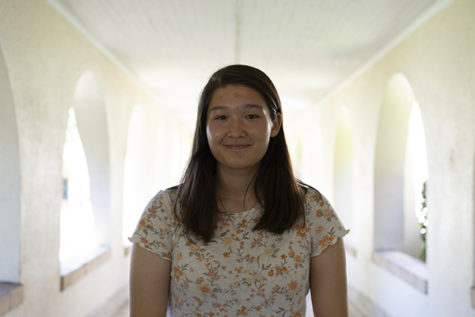
2018-2019 - Staff Writer
2019-2020 - Managing Editor
2020-2021 - Editor-in-Chief
Hear more about me!
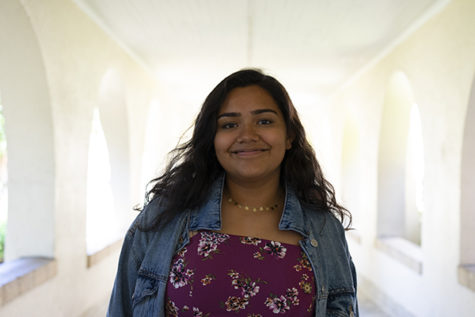
2018-2019 - Staff Writer
2019-2020 - Social Media Manager
2020-2021 - Creative Adviser
Hear more about me!
The planet is burning, oceans are rising, animals are dying and our quality of life is deteriorating every day. This relentless destruction of the planet can only be stopped if humanity as a whole takes more conscious steps towards sustainability.
November 20, 2019
Wandering down aisle after aisle, you scavenge through countless bland, shapeless t-shirts and beat-up jeans that are five sizes too big. But suddenly, hiding in plain sight, you find what you didn’t even know you were looking for. “It’s definitely not easy to find good stuff because it will mostly be stuff that doesn’t fit,” Jace Purcell, avid thrift shopper and junior at Paly, said. “But once you find the right stuff, it’s cool because you know that it’s unique, it’s yours.” Purcell sees thrift shopping as challenging but rewarding, comparing it to a treasure hunt. More rewarding than finding the “treasure” is the feeling that you are helping the environment one reclaimed shirt at a time.
While many associate environmental sustainability with thrifting, planting trees and using refillable water bottles, in the grand scheme of things, there are many unsuspecting contributors to the depletion of Earth’s resources.
Magic, a local non-profit organization founded in 1972 by David Schrom, is a collective community that lives an environmentally sustainable lifestyle. They implement numerous initiatives that help limit negative environmental impacts, including their drastically different approach to standard transportation. The dozens of residents and fellows that live at Magic utilize bicycles as their primary mode of transportation, significantly decreasing their carbon footprint.
However, their lifestyle choice is not just about the carbon emissions—it is also about living on Earth in a way that minimizes what is taken and maximizes energy output. “We have to consider more than consumption,” Schrom said. “It’s throughput, it’s material, it’s matter. It’s how much of the Earth and how much of nature we are going to rip apart in order to create artifact.” Biking leaves a smaller footprint and also minimizes the resources used in the process of creating these vehicles, a factor often neglected in the estimation of environmental impact.

When one buys gas to drive to work or to the supermarket, they are contributing to the depletion of the ozone layer and fueling a negative cycle that hurts both our planet and human life. The thinning of the ozone layer allows ultraviolet radiation to penetrate our skin and increases the rates of skin cancer, eye cataracts and both genetic and autoimmune diseases.
While technology does not create the same obvious effects on the planet as carbon emissions from cars, it does require similar demands from large industries and corporations that produce harmful amounts of gases and other chemical substances. Junior Hyunah Roh understands the expectations and ignorance of living in a technology-driven environment. “Living in Silicon Valley, I think we are too caught up on all the luxury of technology and I think it is important to educate each other about the environmental issues it creates,” Roh said. “I feel so lucky to live in such a healthy environment and think preserving our planet has a higher priority than owning the most advanced technology.”
While in the Magic community members share just one cell phone between six people, most people in Palo Alto are constantly upgrading to the newest models and discarding their outdated devices that they only used for a few years. “I recently switched to an iPhone 11 from an iPhone 8 because I was interested in the new features it offered, but I was never aware of the environmental impacts this would have,” Roh said. This quick turnover of goods that include resources such as metals and rubber increases the waste in landfills and the lead content can have harmful effects on our body. According to Turtle Wings, a certified electronics recycler, “E-waste represents 2% of America’s trash in landfills, but it equals 70% of overall toxic waste. The extreme amount of lead in electronics alone causes damage in the central and peripheral nervous systems, the blood and the kidneys.”
Knowing these wasteful tendencies, many companies have launched new programs to lessen their impact on the environment. In 2008, Samsung launched a program called Responsible Recycling, in which they salvage discarded electronic devices and recycle the materials. Through this program, Samsung has recycled over 800 million pounds of would-be waste.
While it may seem like only giant corporations can make a big impact, local communities and organizations can as well. Magic understands the incredible amounts of resources required in the meat industry and the additional struggle to find fresh, affordable produce. “The farmers’ market that we helped start—over on California Avenue—has vendors who every day have leftovers that they can’t take away and bring back next week because it won’t last. So we go around and salvage food from them with the understanding that we are going to use a certain amount of it here at Magic and donate the rest,” Schrom said. “We interrupted the waste stream, made a statement to other farmers’ market goers, reduced the amount we personally produced and gave the opportunity for others who were going to eat less well, to eat better.”
Regardless of the size or type of an organization, everyone has an opportunity to become more sustainable and positively impact the planet.
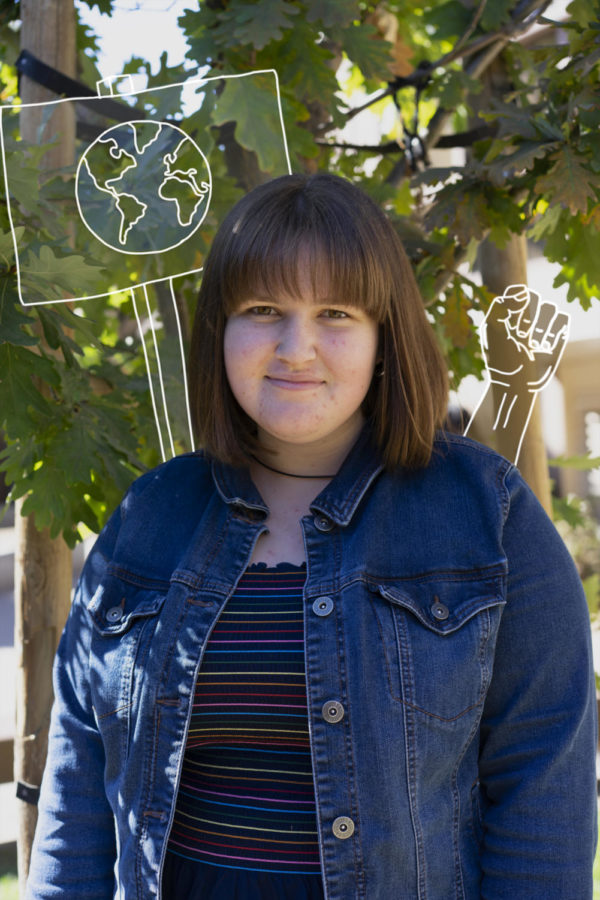
On September 20th, millions of people all over the world walked out of their schools and offices and onto the streets to join one of the largest organized climate protests in history. Just one night before the day of striking, Paly senior Emma Donelly-Higgins, who had organized protests in the past, noticed the absence of planning for this particular walkout at Paly. With the help of physical flyers and social media to spread the word, Donelly-Higgins stepped up and organized a Paly climate strike overnight.
The main goal of the strikes was to bring mass awareness to climate change and urge global leaders to restrict carbon emissions, which has been a controversial and politicized issue.
“I think in the U.S, it is true that big businesses and big corporations are making money off of things that contribute massively to climate change,” Donelly-Higgins said. “People like Trump want to keep oil drilling. It’s bad, but it benefits billionaires because it’s their businesses, and I think that’s part of the reason why it’s become this debate.”
Since Trump was elected President, Donelly-Higgins has attended and organized countless protests, ranging from a variety of topics from gun control to women’s healthcare. For Donelly-Higgins, activism has been greatly facilitated through the use of social media platforms like Instagram, which have played a huge role in the organization of many Paly protests, including the climate strike.
“[Social media] is one of the easiest tools to use now and one that is used a lot to organize movements like this,” Donelly-Higgins said. “I think it’s changed the way activists work, in mostly a really good way.” The rise of social media has certainly caused a shift in the way activism works, allowing anyone to gain exposure to all kinds of political ideas simply by tapping or swiping on a phone screen.
However, there are also some negative issues that come along with the use of social media for activism. There is an uprise in people sharing or reposting political messages on their social media platforms with no intention of taking any further action—a trend commonly referred to as “Clicktivism.”
“People just repost things, not specific events, just statements about issues, but then they don’t do anything about it,” Donelly-Higgins said. “They’re just posting it for the social clout of posting it. And that’s fine if they’re actually attending protests or changing laws in some way, but that’s not happening.”
Donelly-Higgins plans to stay focused on the political side of the issue. “I’ll join a strike if there’s another big one, but I think focusing on the 2020 election is massive,” Donelly-Higgins said. “Every single person in the country should be voting, regardless of who they support. It matters so much, not even just for climate change, but for everything.”
No matter who you are or where you live, climate change will affect you eventually unless immediate and effective action is taken, and it is in everyone’s best interest to do their part to help the planet. “It’s something that, as people in Palo Alto, we might not be as affected right now, but people in other parts of the world are feeling the impacts, especially in impoverished places,” Donelly-Higgins said. “They’re dealing with it right now and we eventually will too. It’s relevant to every single person who wants to keep living and have their kids live.”
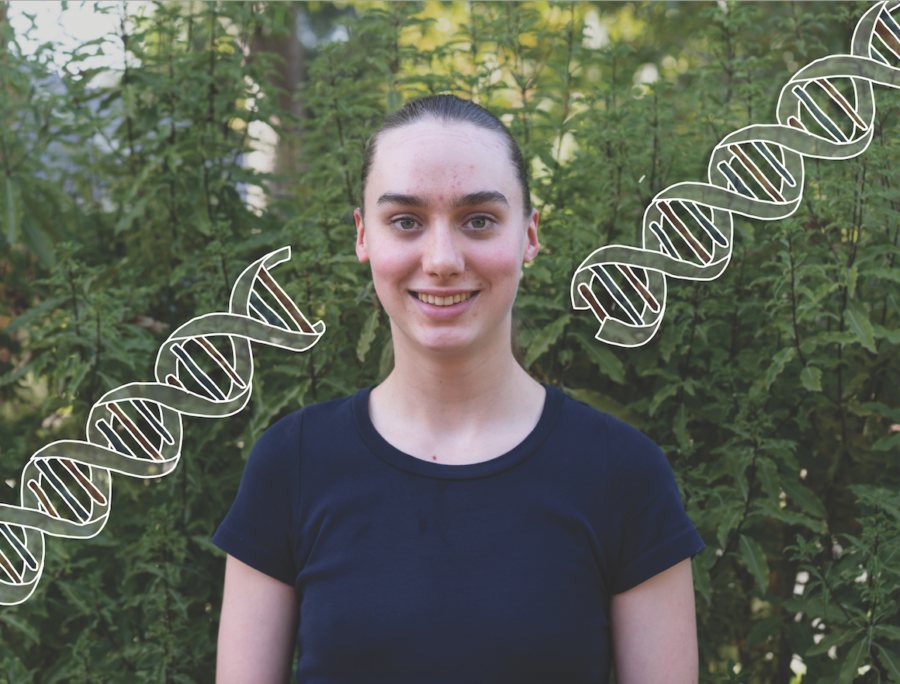
Thirteen years ago, students would file into their early math class at Escondido Elementary. Each day, they noticed two hooks and two chairs empty, causing a rush of jealousy as to why their peers, Hilary and Jen Bayer, got to sleep in and come to school after math class.
Hilary and Jen Bayer were the first babies born into Magic, and they had a childhood that seems almost unreal. Growing up, the Bayer twins believed that it was common for Saturdays to be used for planting and caring for nature, and they spent Sundays salvaging food from the farmers’ market for the food bank.
Once they were old enough, the twins took a small step outside of the Magic community and attended a Palo Alto public school, getting a glimpse for the first time that maybe not everyone spent their weekends helping the environment.
“It was definitely a culture shock in some ways,” Hilary Bayer said. “To be honest, I barely remember kindergarten and first grade, but I remember that what was acceptable at home was not as accepted in school.”
The Bayer girls were not at Escondido for very long, as they were kicked out after first grade. “The reason we got kicked out at the end of first grade was because our parents worked out a deal with the teacher where we could come in at the end of the first recess. […] So, the principal found out that we had only been coming to class at 10 a.m. most of the year and we had been marked as truant so we ended up going to court and getting kicked out,” Bayer said. Although they were initially enrolled in the school so that they could connect with other kids their age, being kicked out ended up being a blessing of sorts.
To fill the legal requirement of school, the twins joined Ocean Grove, a charter school for homeschoolers. While this may have closed some doors, such as the social aspect of public school, it opened others—they were able to have more freedom and choice in what they wanted to study.
As the twins got older, they started to gradually gain more responsibilities in Magic and community activities. “I feel like it was more of a gradual shift than a change when we turned 18,” Bayer said. “We had more and more leadership roles in Magic, like running our own public service projects.”
The Bayer twins’ untraditional and sustainability-focused upbringing can be seen in places other than their schooling and weekend traditions. Until the age of 16, they had only been in a car three times. The members of Magic use bicycles as their primary method of transportation, only taking cars when a more eco-friendly mode was nearly impossible to use. From a young age, the Bayer twins have almost always biked to beaches, forests and any other relatively close area—and still do to this day.
“I actually don’t have a driver’s license; I’ve been putting it off because it wouldn’t make that much of a difference, and it kind of a pain to get, but I have a learning permit,” Bayer said. “I still bike almost everywhere.”
Today, at 20 years old, Bayer acknowledges that growing up at Magic has impacted her views and habits. “I definitely think that I want to lead towards a more sustainable way of living,” Bayer said. “And I think leading by example is actually a powerful way of leading and it’s in a lot of people—just there’s a lot more talk than action in a lot of areas.”
Recently, both Jen and Hilary Bayer worked on a project called Valley Barcode Life. They chose to become involved with it in hopes of making a lasting impact on people and their ongoing lives.
“It about using DNA barcoding, which is a way to identify species based on a small segment of DNA as a way to both learn about biodiversity and how it’s changing,” Bayer said. “It is also meant to engage people who work in technology but are less interested in the natural world and basically getting them to think about ‘Why should we care about the natural world? Why is it essential to human beings?’ and what each of us can do take care of it.”

Evan Baldonado, a Paly alumna and freshman at Stanford University, has had an avid passion for environmental awareness and responsibility from a young age. During his time at Paly, which he graduated from in 2019, he contributed to living and leading an environmentally sustainable lifestyle in numerous ways.
During his senior year, Baldonado started a petition against the single-use plastic wrappers that The Hershey Company uses to wrap our favorite sweets including Hershey’s Bars, Jolly Ranchers and Reese’s Peanut Butter Cups. To promote his petition, he pledged to offset one pound of carbon dioxide emissions for every like or share that his post received on Instagram. This meant he would purchase carbon offsets—certificates that finance various projects which reduce greenhouse emissions. “This is a cheap and effective way to promote the campaign, as people who care about plastic reduction also often care about climate change and greenhouse gas emissions,” Baldonado said.
His ideas quickly turned to real results and accumulated over 1,700 signatures in less than a month. The pledge, which is still active, continues to acquire more pledges to this day. “I am grateful that so many people have already signed the petition, but I am still hoping to have many more [people] do so as well,” Baldonado said.
After graduating from Paly, Baldonado’s fascination with the environment has grown stronger than ever. This quarter at Stanford, three of his eight classes are “Environmental Regulation and Policy,” “Frontiers in Marine Biology” and “Very Impactful People – Social Innovation & the Social Entrepreneur.” All of these courses focus on environmental sustainability and the importance of social change.
Unlike others, Baldonado actually practices what he preaches. Every day, he makes small efforts that accumulate to grand strides in progression towards a sustainable world. “I try to cut down on my use of single-use plastics by avoiding plastic cutlery if possible,” Baldonado said. “I also don’t eat meat or fish.” Even these small, incremental choices can seem daunting at first, but he has tips to make these changes more manageable. “For anyone interested in becoming vegetarian or vegan but who may be intimidated, I would recommend starting with Meatless Mondays or taking other small steps toward larger changes,” Baldonado said.
And while these small changes may seem insignificant in affecting the condition of our planet, it has the potential to incite real change. “Don’t overlook the power of making small changes in your lifestyle to be more sustainable,” Baldonado said. “Small changes are great stepping stones to larger ones and are completely valid and respectable.”
In the end, Baldonado knows that his initiatives alone will not solve all of our planet’s problems, so his primary goal is to inspire others to attain the same investment in environmental sustainability. “I hope that people will become more mindful of their individual impacts on the environment,” Baldonado said. “I also hope to see more people taking initiative to design solutions and inspire other people to help make the world a better, cleaner place.”
Even though actions made on a corporate and governmental scale to reduce carbon emissions could greatly affect the sustainability of our planet, a collective effort made by the seven billion people inhabiting our planet has the potential to create an equal or even greater positive impact on our sustainability.
Avery Hill, a PhD student in the Biology department at Stanford University, recognizes the greater impact that everyday people can have on creating a more sustainable future, especially younger generations. “Young people seem to understand the risks and consequences of inaction better than previous generations, and will likely be the primary agents of change,” Hill said.
Effective change starts with every individual, and many people in the Palo Alto community have already begun to adopt environmentally friendly habits into their daily lives.
Hundreds of students bike to school every day, which is an easy initiative that has an effective impact on the environment. Sophia Krugler, a junior at Paly, has been biking to school since she was a freshman. “Considering how much traffic there is at Paly, biking to school is actually sometimes faster so if you are trying to be environmentally friendly, it’s not even that big of a compromise,” Krugler said.
Another common and simple effort made by Palo Alto students is the usage of reusable water bottles and straws. Swell, Hydroflask and FinalStraw are just a few of the many reusable items Paly students use and bring to school. Paly sophomore Amanda Mershon is one of many who owns a reusable water bottle and straw. “There has been a ton of commotion about our environment and how we need to save it,” Mershon said. “I think this has caused many people to become aware of what we need to do better and have started to purchase more reusable and eco-friendly products.”
With the decline of our Earth’s health, many students have taken the initiative to educate themselves on these impactful issues through Paly’s Advanced Placement Environmental Science course (APES). APES has helped broaden students’ knowledge and awareness of global warming and climate change. “Taking APES does not obviously stop the increase in global temperatures, but it is used as a tool to further educate more of our generation,” Lauren Purdy, a Paly junior currently taking APES, said. “I don’t want my kids to be living on a damaged, overpopulated, and polluted planet.”
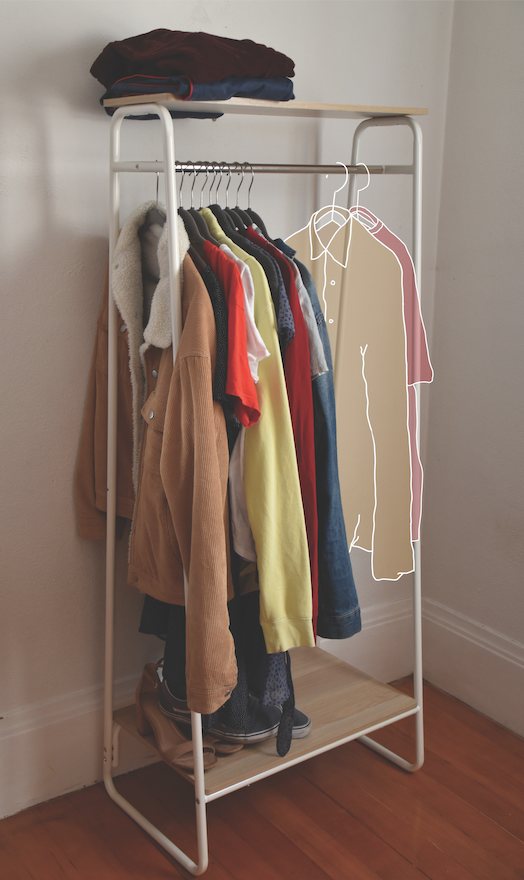
Another simple yet often overlooked way that students can live more sustainably is by having a more environmentally conscious approach to the clothing they buy. At Paly, fashion is a form of expression for many students. Through the “fast fashion” business model, clothing brands such as Forever 21, H&M and Zara have been able to thrive off of making cheap and trendy clothing quickly and effectively. However, there has been a sudden shift towards thrifting clothing or making something new out of old clothing, prompting disapproving attitudes towards fast fashion.
It seems that many Paly students have already begun to adapt to this new trend. Many are turning to thrift shops,such as Savers in Redwood City and Crossroads in San Mateo to shop for new clothing. Jace Purcell, a junior at Palo Alto High School, goes thrifting whenever he can. “Thrifting your clothes is a great option because the clothes are often much higher quality than fast fashion and you’ll have much more unique pieces which means you’ll have way more drip than H&M or Urban,” Purcell said.
If thrifting or buying secondhand clothing is not your style, there are many other viable alternatives for sustainability throughout your closet. Consider, for example, choosing to shop at more environmentally conscious brands. Brands such as Everlane and Made Trade market all of their clothing pieces as eco-friendly, sustainable and ethically-sourced, all while maintaining the affordable prices that make fast fashion companies so successful and popular.
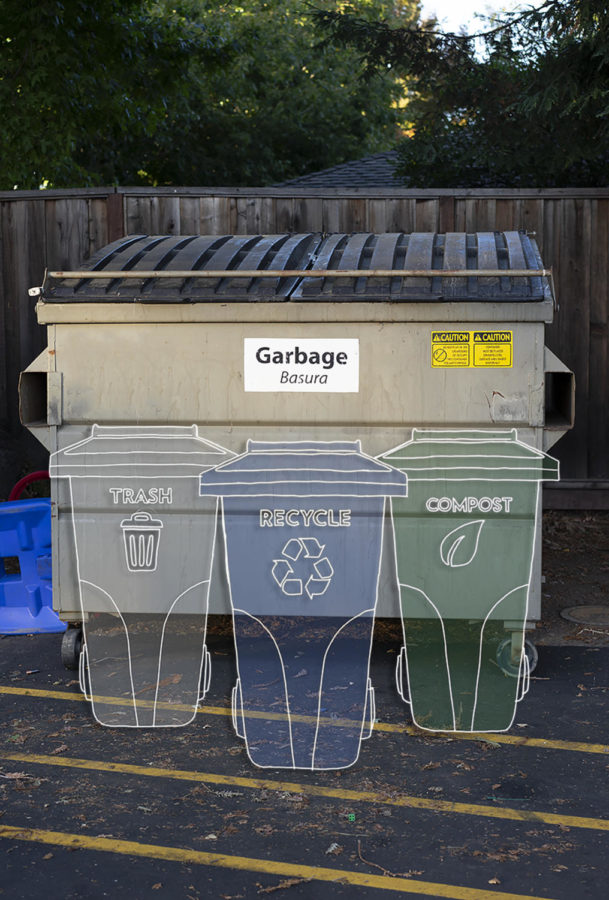
“Fast fashion creates a ton of waste,” Purcell said. “You should instead invest in slightly more expensive things that will last years and won’t pollute the world.” Whether it be shopping at thrift stores, wearing secondhand and hand-me-down clothing or turning to more sustainable clothing brands, anyone can do their part to limit the amount of clothing they buy—especially cheaply made, low-quality clothing. If everyone takes these seemingly small and insignificant steps, their collective efforts would add up very quickly and considerably curb carbon emissions. All it takes is a change in mindset about the clothes we wear and the effects they have on the planet.
While smaller-scale actions like these may seem insignificant, Hill recognizes the deeper effect that these lifestyle alterations can have on the wellbeing of the planet. “A civilization is composed of individual people and the relationships between them,” Hill said. “A person can have a real impact by both changing their personal relationship to the environment—like taking shorter showers or picking up trash—and by using their connections to other people—like writing letters to senators or organizing demonstrations—to ultimately change the relationship between civilization and the environment.”

2018-2019 - Staff Writer
2019-2020 - Managing Editor
2020-2021 - Editor-in-Chief
Hear more about me!

2018-2019 - Staff Writer
2019-2020 - Social Media Manager
2020-2021 - Creative Adviser
Hear more about me!